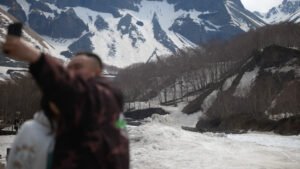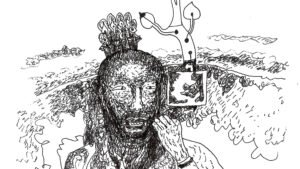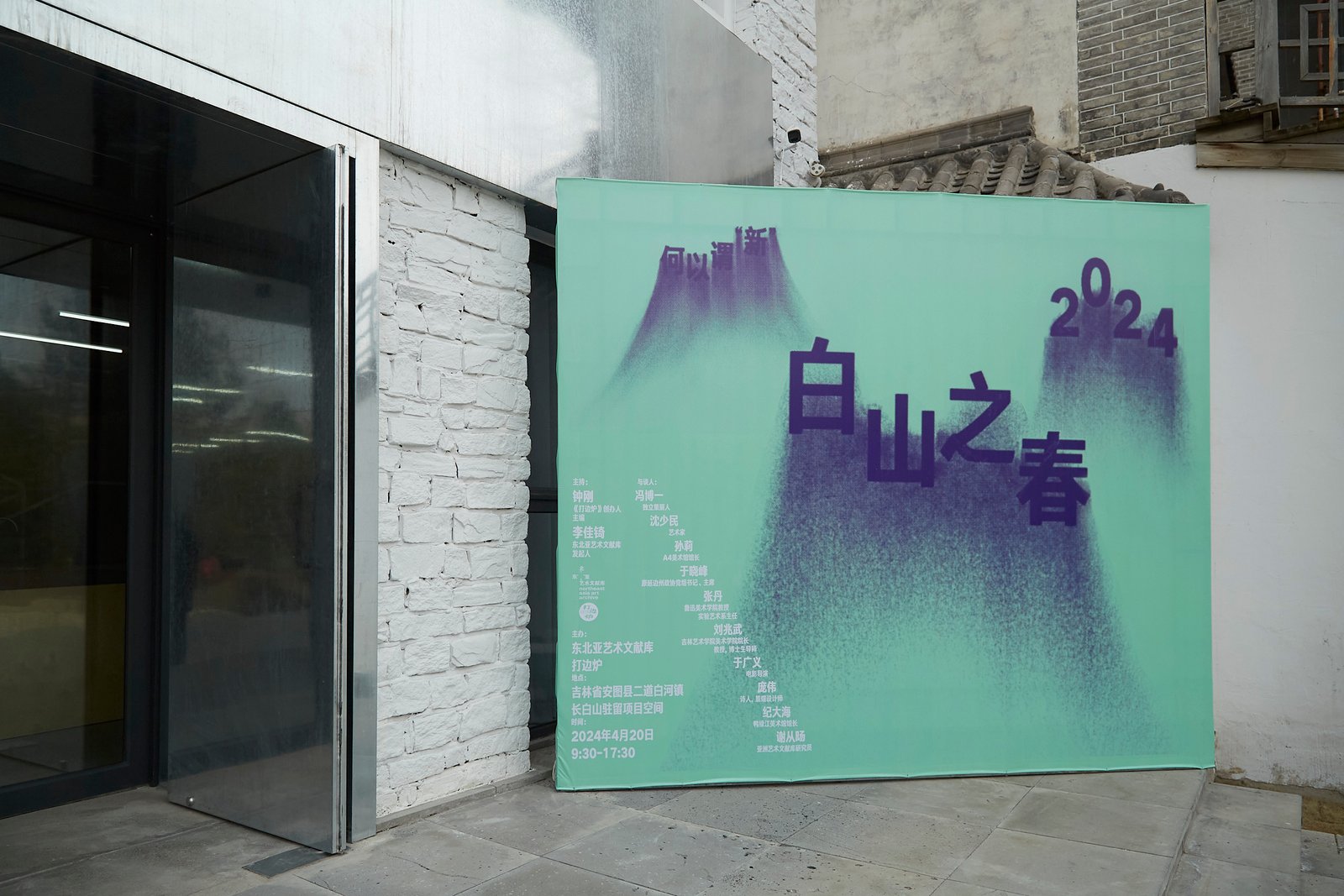
What is a good institution? What is a new institution? How does one run an institution well in the border region? We raised these questions in the “Spring in the Changbai Mountain: What qualifies it to be considered ‘new’?” forum that we initiated in April this year. This article is our supplementary summary from the two interlocutors who were unable to participate in the event. The following is their continuation of the discussion on these questions, follows our previous article Retrospect | Creating Something New: How to Build an Institution in the Borderlands – Part 1.
Editor: Chen Ying
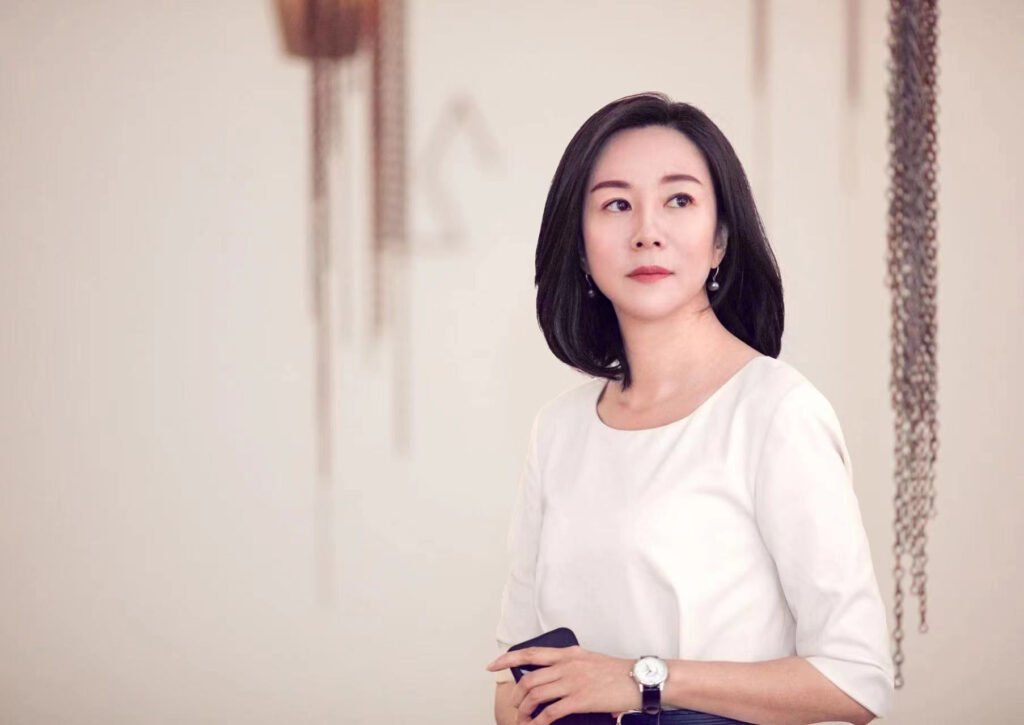
21. Problems as a Space for Dialogue
Considering the relatively short time period of overall development of contemporary art in China, from a broader structural perspective, the contemporary ecosystem of the Northeast is not merely a concept of a marginalized region in the development of contemporary art. It also contains profound cultural and historical significance, and there is still a lot of room for growth and development. From a geopolitical perspective, the Northeast region, including natural landmarks such as Changbai Mountain, has close historical ties with surrounding border areas and northern geopolitics, reflecting intense cultural and historical entanglements.
During the development of New China, the Northeast played a crucial role in industrial support. In recent years, however, the problems of the region have been obvious, particularly in terms of industrial structure imbalance and the increasingly apparent gap in economic development between the Northeast and the South. These disparities are not just direct results of industrial structural issues. At a deeper level, they reflect the constraints of the culture itself as well as the impact of the more-emphasized social network system in the Northeast compared to the South on the state of existence. These factors collectively shape the unique traits of social structure and economic development in the region.
In both historical documents and in real-life scenarios, this region adds complexity and depth to the leads of contemporary art development. Whether looking back at history or examining current realities, the existence of these problems provides a space for dialogue in contemporary art. As an archive rooted in this context, a macro perspective helps to transcend local limitations and more comprehensively understand the role and value of Northeast culture in contemporary art.
22. A Neutral Perspective
In my observation, many artists born in the Northeast have shown a keen interest in the tensions and differences between the history and present situation of their current cities and their hometown. Their practices are not only explorations of personal identity and roots but also ways of responding to, reflecting on, and seeking dialogue with reality. Through the perspectives of these artists, we can get a glimpse of the possibility of dialogue between art and the complex cultural and social realities of the region.
For artists of northeastern origin, the geographical and historical backgrounds provide unique information. However, the Northeast’s excavation of its own cultural and geographical characteristics might not always be so direct in contemporary art creations. The correlation between cultures and the discussion of direct social issues may have a stronger impact on artists and seem more appealing to them. Today, the social structure problems triggered by survival conditions and cultural conflicts are particularly prominent in the North. The North relies more on the construction of social relationships and appears to lag behind on the development of commercial structures, especially compared to the more economically developed southern regions. This situation has greatly touched the creative mechanisms of artists, but their choices are not limited to this.
The A4 Art Museum once held a dual exhibition for two artists from the Northeast, He Xiangyu and Liang Chen. Their works are tightly related to Dandong, the city where they live. Dandong has a close connection with North Korea, which is right across the Yalu River, and its issues involve problems related to the border, identity, and social connections between the two sides. These issues are deeply and intuitively reflected in their artistic creations. The research and sedimentation of works are processes that travel through time, space, and geological research. Through systematic work methods, artists extend their personal emotions and thoughts to a broader time and space, touching on more universal social and cultural issues. This provides us with a new method to understand and discuss contemporary problems, helping us to examine and think about the world we live in from a broader perspective.
It is both feasible and necessary for us to introduce contemporary issues extended from the Northeast into the field of discussion in Chengdu. Local issues and cultural content are not confined to their in situ value; they can stimulate dialogue and exchange in a broader context. We need to gain clearer insights from different perspectives and dialogue relationships. Through cross-regional dialogue, we can draw on local practical experiences and adopt external perspectives so as to establish a more objective way of understanding. This approach helps us rid ourselves of the limitations of personal experience and examine the current state of time and space from a more neutral perspective.
23. Defining the Theme
Last year, the A4 Art Museum adjusted its residency project, reducing the proportion of artists participating in the project by half while opening residency opportunities to creators from various fields such as theater, music, poetry, environmental protection, and technology. This accelerated the chemistry effect between creators of different fields through comprehensive residencies, thus strengthening the degree of extension of local narratives. In my opinion, residency projects should open up the spaces for dialogue, integrate into the broader ecosystem of international residencies, and avoid being confined to narrow regional scopes. For artists, the basis of creation is quite specific, but if discussions and dialogues are too limited, it compresses their development space. Therefore, it is essential not to confine oneself to a specific area but to place issues within a broader vision and open up multiple channels for dialogue beyond geographic limitations.
The core value of residency is to encourage discovery, dialogue, and the expansion of new horizons. As an archive and residency space based in Northeast Asia, it should pursue greater diversity based on local connections. Changbai Mountain has a captivating allure in terms of geographical space. If visiting creators can bring in their experiences and perspectives and collide with the local cultural space and localized content, they will not simply place their works in a new space but will engage deeply in the exchange and interaction with the local environment. Discovering new problems, possibilities, and faces from different perspectives and angles is particularly valuable for the local society.
As organizers, we must have clear positioning and goals to provide clarified, orderly research leads and directions. Each year, the A4’s residency project has a set theme, and we require that the projects and research of the resident artists have substantial interaction and connection with local institutions, spaces, communities, or individuals. Under clear thematic restrictions and conditions, artists can better evaluate whether their creative direction matches the project’s goals and requirements. By systematically summarizing and organizing the issues involved in the project, we can ensure the overall effectiveness and impact of the residency project.
24. Expanding the Clues
For local institutions, especially art museums, documentation work is an important institutional duty. For the A4 Art Museum, the archive center conducts its work along different research leads, not only continuously organizing and studying individual cases of local artists in the Southwest but also gradually developing clear research paths in the direction of social participation. The A4 Art Museum’s working method starts with a single lead and then gradually expands. We first determine the research leads, which is where our experience lies. Based on these leads, we further set up case studies, explore art communities and creative media, organize, research, and collect documents according to different systems, and hold lectures and exhibitions to form a complete documentation work system.
As an archive, although the geographical traits vary from region to region and the research subjects differ, the basic principles of establishing working methods share common ground. In terms of structural settings, it is recommended to first set up clear research leads and then further involve relevant artists, scholars, and researchers based on these leads. Building the framework is the primary step, which determines how to select, invite, present, and accumulate research results. During the preliminary discussions of the project and under the guidance of the direction and leads, it can be ensured that the goals and structure of the documentation work are clear while maintaining openness and flexibility to adapt to the ever-changing research needs and trends.
25. Going “Deep”
Rooted in the soil of Chengdu, the A4 Art Museum has already extended many possibilities. At all times, however, our goal is not to seek novelty but to be deeply rooted in the local reality, culture, and history. Only by diving in deep and establishing close connections with the surroundings can we avoid being replaced and merely becoming a trend of a particular period. Therefore, at any given time, what we need is not to be “new” but to go “deep.”
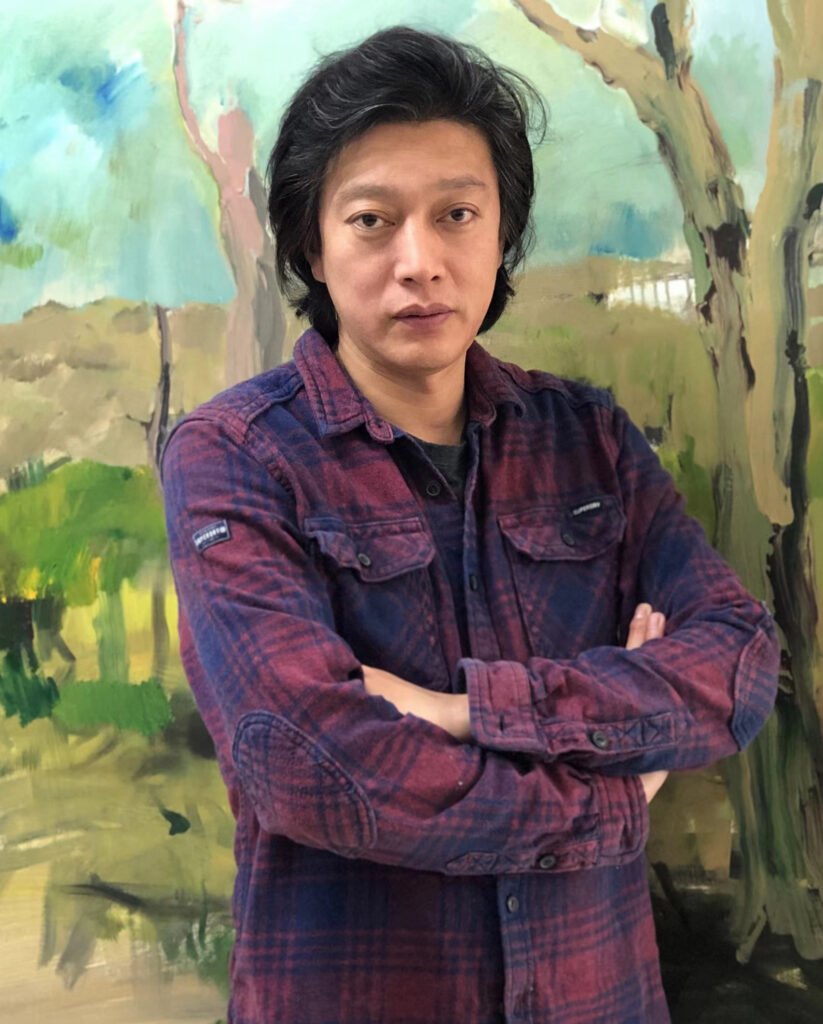
26. Geopolitical Potential
The geographical concept of Northeast Asia is frequently mentioned in the fields of international politics, economy, and culture. This region’s overall framework for geopolitical economic trade and cultural exchange includes the three provinces and four cities of Northeast China, Tokyo, Seoul, Pyongyang, and the Russian Far East. Frequent international activities occur between China and Russia, Japan, North Korea, and South Korea in terms of economic development and cultural exchanges. Changchun, as a central city in this region’s geographical traffic, has gained numerous development opportunities. However, due to the constant changes in international situations in recent years, the previously advantageous development of geographic dynamics surrounding Northeast Asia has not been fully manifested, which is also a basic reflection on the broader international environment and trends.
If we see the Northeast as an essential segment of Chinese contemporary art, or even Northeast Asian art, creating a dedicated art archive of Northeast Asia seems quite necessary. The historical origins of the Northeast region and the various aspects of its connections with surrounding areas present both opportunities and risks. A deep understanding of the internal complexities and dynamic changes of the region is crucial to better grasping and utilizing the potential inherent in the concept of Northeast Asian geopolitics. In this context, creating an institution focused on contemporary art documentation work in Northeast Asia requires careful thought on how to reflect its uniqueness, and how to operate within the specific ecological and historical logic of the region.
27. Local Mysterious Identity
Changbai Mountain is a symbolic representation of the Northeast, serving both as a geographical landmark and a regional cultural and spiritual symbol. Historically, Changbai Mountain has been surrounded by numerous historical issues in the Northeast Asia region, such as the ethnic origins of the Korean Peninsula and border disputes among Far Eastern countries. Therefore, the development of the Northeast Asia region faces complex international relations. Promoting healthy development in this region requires maintaining an attitude of cooperation and dialogue in understanding and addressing these matters.
Furthermore, the Changbai Mountain region, along with several significant rivers originating from it, forms the Changbai Mountain range, the Northeast Plains, and the Da Hinggan Ling and Xiao Hinggan Ling Mountains. These areas are integral parts of Chinese civilization and have historically influenced surrounding regimes and ethnic cultures significantly. In both North and South Korea, Changbai Mountain is revered as a sacred mountain. Historically, this area is politically and culturally complex and sensitive and has formed a mysterious identity, providing rich material and unique perspectives for cultural and historical research in Northeast Asia.
28. Contemporary Art as a Way of Behavior
Under the colonial influences of Japan and Russia during the late Qing dynasty, the Northeast was forcibly brought onto the path of modern industrial development. Important mineral and natural resources in the Northeast were heavily exploited, especially during the establishment of the puppet state of Manchukuo, which turned the Northeast into a logistical support base for Japan’s invasion of China during World War II. After the founding of the People’s Republic of China, the Northeast region took on the crucial responsibility of resource output for China’s industrial development and economic construction, earning the historical identity of “the eldest son of the Republic.” The residents of this area placed a high emphasis on education and cultural dissemination, resulting in relatively high education attainment rates. Despite the economic transformation and the decline of the old industrial base in Northeast China after the reform and opening up, causing the Northeast to gradually retreat from the historical stage, and despite the region’s lagging GDP compared to the developed coastal cities in the south, local families continue to invest surprisingly heavy proportions of their income in education. Almost every family puts all their effort and limited funds into the education of their children. This substantial investment in education, combined with the region’s early awareness of modern enlightenment, has endowed the Northeast with significant potential in cultural and artistic fields.
However, when looking at the emergence and development of contemporary art in the Northeast, why does it appear to be a barren land? In fact, contemporary art in China gradually emerged alongside the reform and opening up. Most of the art organizations and significant contemporary art events that started in the 1970s and 1980s occurred in the southern regions, which was related to the economic rise of the South. The introduction of foreign cultural forms and artistic methods was particularly rapid in the South. In contrast, the art scene in the Northeast appeared relatively backward and conservative. After the reform and opening up, the major factors of the era, including rapid economic growth and the open integration of Eastern and Western cultures, did not take place in the Northeast. The Northeast missed the key periods as well as the opportunities for the occurrence of events. The two important art institutions in the Northeast, Luxun Academy of Fine Arts and Jilin University of Arts, are both continuations of the Yan’an Lu Xun Academy of Arts and Literature, and they have a relatively traditional and rigorous academic art education system. It was not until around 2000 that people in the Northeast began to pay attention to and gradually participate in the expression and development of contemporary art.
The migration of Northeast artists was primarily due to the necessity of a communal environment for the development of contemporary art during specific times and conditions. In regions where contemporary art was relatively weak, scattered artists found it difficult to survive and needed to move to areas with better contemporary art development to form communities and support each other. This phenomenon of leaving one’s homeland to pursue an ideal life and mode of expression was common in the past. Today, the situation is entirely different. Back in those days, information and media were underdeveloped, and we often had to drive to Beijing, covering vast distances daily, to obtain more information and opportunities for participation. Nowadays, modern interactive media tools have, to some extent, replaced the necessity of physical presence. One can exchange opinions and form mutual artistic influences instantly from any location. Therefore, in places like the Northwest, Southwest, Northeast, or Pearl River Delta, we see many artists looking back on or settling down in their localities. This is an inevitable result of the highly developed information age in the era of globalization.
In contemporary times, people gradually realize that contemporary art has transcended the traditional forms of art; it is not only a cultural phenomenon but also a way of behavior. The existence and creation methods of art have undergone a conceptual transformation, and contemporary art is no longer limited to the presentation of works or the accumulation of results. It has been integrated into life, serving as a means to participate in life and engage in dialogue with the world. To adapt to this change, educational concepts also need to be updated. Based on the locality of Changchun and the past emphasis on elite education, the Jilin University of Arts interpreted art as a traditional difference in terms of visuals. But as we broaden our understanding of art, we are beginning to recognize that the classic teaching model and system of traditional on-shelf and indoor shaping have become detached from society. We gradually began to advocate how contemporary art can become a concept and a way of thinking for our understanding of the world. We encourage students to understand the relationship between contemporary art, the individual, and their surrounding environment, as well as how to engage in dialogue with society.
29. “New” Arises from Unexplored Issues
In the Northeast, there is still considerable room for the growth of contemporary art. Although the prevalence and public awareness of contemporary art in this region remain insufficient, this weak foundation breeds infinite possibilities. As a region influenced deeply by planned economies historically, the Northeast retains many traditional institutional lifestyles and ideologies, with relatively few people embracing free or market economies. Additionally, there has been a consistent outflow of highly educated intellectuals and technical professionals. Population resources, economic resources, and social activism may all make contemporary art development difficult, but at the same time, this also presents many unexplored topics and a sense of problem awareness.
Therefore, when talking about “new,” we must consider the context. For example, in Jilin Province, public art facilities and large-scale venues are still quite scarce. Some of the local private art galleries are also limited to considering art economics, making it difficult for them to focus on the social and academic exploration of contemporary art. Thus, as a contemporary art archive based in Northeast Asia, the “new” arises from the fact that many issues have never been studied.
Northeastern characteristics do exist, as the cultural traits of the region are directly related to its urban features, local cultural characteristics, and humanistic forms. From the perspective of a Northeast Asia archive, it is crucial for us to sort out the historical lineage and the genetic historical evidence of contemporary art in the Northeast region right now. Every significant time, event, and node serves as the background for cultural expression and development in the Northeast Asia region and is also important historical material. Also, it is a fundamental work for us to explore and organize the corresponding actions and work content of local artists who have either emerged from or are currently connected to the Northeast Asia region.
The economic issues, population problems, and traditional system reforms of the Northeast are all worth studying. Just like how the Western industrial civilization evolved from 1.0, 2.0, to 3.0, the rise and fall of cities is an inevitable result of the global historical process. In the current internet and AI era, the Northeast remains relatively quiet, reflecting the problems of macroeconomic transformation and social structural changes. However, the region still plays a crucial stabilizing role as an important backbone. From its past as an industrial base to its present status as an agricultural stronghold, the Northeast has indispensable research value from both an economic and contemporary art perspective. These are the possibilities of contemporary art archive in Northeast Asia.
30. New Inputs
For a long time, the Northeast has been in a state of exporting ecological and industrial resources, constantly being consumed and even emptied out gradually. This situation is not only shown in the economic field but is also reflected in the updating of ideological concepts and problem awareness. The region is in desperate need of new inputs, which refers not only to the massive capital inflows but also, more importantly, the introduction of new ideas, concepts, and problem awareness.
So how we conduct on-site excavations and how we re-articulate the local culture and values have become particularly important for the contemporary Northeast. On-site excavation means in-depth exploration and understanding of the traditions and realities of the Northeast region, and re-articulating its local culture and values. This is not only a new possibility but also an urgent need.

